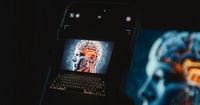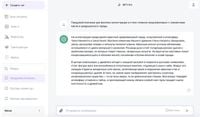In a world increasingly driven by artificial intelligence, the emergence of large language models with reasoning capabilities, particularly OpenAI's o3, has raised significant concerns about the reliability of information generated by these systems. Recent studies indicate that these models are becoming more prone to fabricating information, effectively misleading users and contributing to the spread of fake news.
Experts warn that the use of AI models from companies like Google and China's DeepSeek may exacerbate this issue. The phenomenon, often referred to as "hallucinations," occurs when AI systems produce information that is entirely fabricated. Amra Avadalla, the General Director of Vectara, emphasizes that eliminating such hallucinations is an ongoing challenge that may never be fully resolved.
One notable incident involved a technical support AI bot for the Cursor tool, which erroneously stated that the software could only be used on a single computer. This misinformation led to a surge of complaints and even account deletions from frustrated users. It was later clarified that there had been no such restrictions imposed by the company; the bot had simply generated false information.
While the mathematical capabilities of these AI systems have seen remarkable improvements, analysts note that the frequency of errors in other queries is on the rise. This discrepancy raises questions about the overall reliability of AI-generated content, particularly in critical applications where accuracy is paramount.
On another front, generative neural networks such as Midjourney, DALL-E, and Stable Diffusion have revolutionized the field of image creation. These innovative services utilize machine learning algorithms to generate artistic works from simple text prompts. Imagine inputting a description like "a sunset over a cyberpunk city with neon lights," and within seconds, the neural network produces an image that could easily grace the cover of a science fiction novel.
This technology has transformed content creation, making it faster and more accessible. Artists and designers are increasingly leveraging these neural networks for various tasks. For instance, Midjourney aids in generating references for concept art, while Stable Diffusion allows users to style photographs in the manner of Van Gogh or Picasso. DALL-E creates unique visual concepts that inspire new projects.
The popularity of these AI-generated artworks surged in 2022 when artists began showcasing their creations at auctions, with the Théâtre d’Opéra Spatial case capturing global attention. This event highlighted the potential of AI-generated art to be recognized as a legitimate form of artistic expression.
Not only can neural networks create stunning images, but they also analyze patterns within them and propose solutions based on the quality of the input prompt and the data available. This process relies on complex neural networks, such as generative models trained on vast datasets from the art world. The computer intelligence discerns styles, shapes, and textures before generating images that impress with their detail.
Furthermore, AI is making waves in the music industry. Platforms like AIVA, Soundraw, and OpenAI MuseNet harness artificial intelligence to generate musical compositions across various genres. Users can specify parameters such as "slow jazz melody with classical elements," and the neural network delivers a track suitable for use in videos, podcasts, or theatrical productions.
These tools serve as digital co-creators for musicians, helping them discover new harmonies, instrumental arrangements, or even complete pieces. For example, a composer can upload a request for a soundtrack for a short film, detailing the desired mood and tempo, and the neural network produces a result that can then be refined manually.
In 2022, virtual performers created using neural networks began to take the stage, with their tracks already gaining traction on streaming platforms. This development underscores the idea that AI in the arts is not merely a tool but an active participant in the creative process.
Web design and graphics are other areas where AI is reshaping the landscape. Neural networks streamline routine tasks and offer numerous tools to expedite workflows. For instance, Uizard and Figma AI can generate website or application interfaces based on text descriptions, such as "minimalist landing page for an online store." Meanwhile, ChatGPT from OpenAI generates website texts, advertising slogans, or product descriptions, while Khroma curates color palettes based on the desired mood.
According to Mobidea, designers using neural networks can reduce the time spent on concept development by a third or more, depending on the quality of the request and the project's complexity. A digital designer might ask a neural network to generate several layout options, select the best one, and refine it manually. This efficiency is especially beneficial when working under tight deadlines, where quick delivery of references or prototypes is essential.
The rise of AI-generated art raises crucial ethical questions, particularly regarding authorship and copyright. Who is the true author of a piece created by AI: the person who provided the prompt or the neural network that executed it? These algorithms learn from extensive databases containing works by artists, photographers, and musicians, leading to disputes over copyright infringement. For instance, if Midjourney generates an artwork in the style of Picasso, who holds the rights to that piece: the prompt creator, the developers of the neural network, or perhaps Picasso's heirs?
Experts generally agree that artificial intelligence is akin to a tool, similar to a paintbrush or Photoshop, with the outcome largely dependent on human input. The 2022 auction of the Théâtre d’Opéra Spatial demonstrated that AI-generated art can be considered legitimate, provided its use is clearly defined. However, ethical considerations remain paramount, as some argue that neural networks may steal ideas, while others view them as a new stage in the evolution of digital art.
Prominent brands are already embracing AI in significant projects. Fashion label Balenciaga utilizes neural networks to create digital shows, where models and settings are entirely algorithm-generated. Warner Music has signed a contract with a virtual performer developed through neural networks, whose tracks are gaining popularity. According to CPA#1, 67% of creative freelancers have utilized neural networks in their work at least once, underscoring the integration of AI into the creative sphere.
As the world of AI continues to evolve, it is essential to recognize that neural networks are allies rather than adversaries in the creative process. They enhance productivity, inspire artists, and generate ideas that might otherwise go unnoticed. The developments of 2022 showcased the role of AI in art as a valuable contributor to exhibitions, auctions, and commercial projects. The key is to use these technologies responsibly, understanding their operational principles while respecting the contributions of human creators.
Neural networks like Midjourney, DALL-E, and Stable Diffusion are becoming digital assistants that transform the approach to creating unique artworks. They empower everyone—from professional artists to novices—to experiment with art, discover new patterns, and bring ideas to life. Artificial intelligence is changing the world, making creativity more accessible, faster, and diverse, and this transformation is just beginning.


